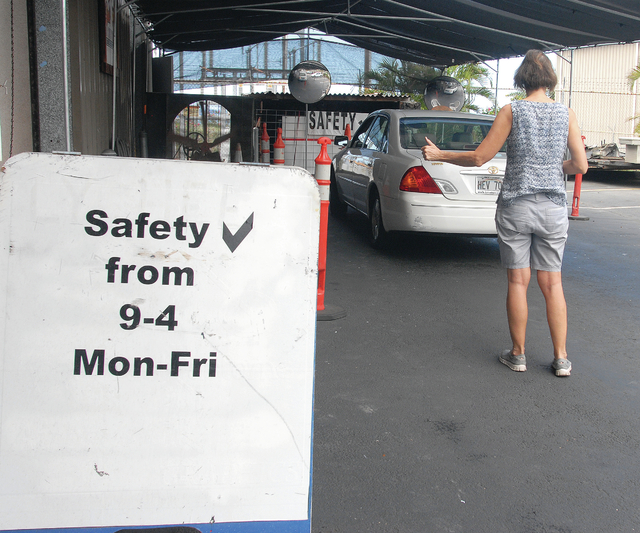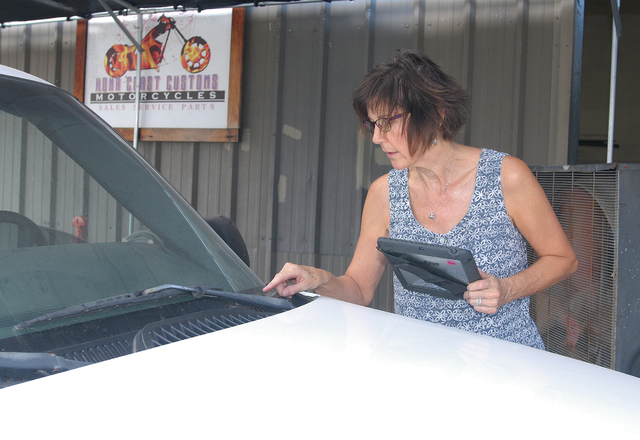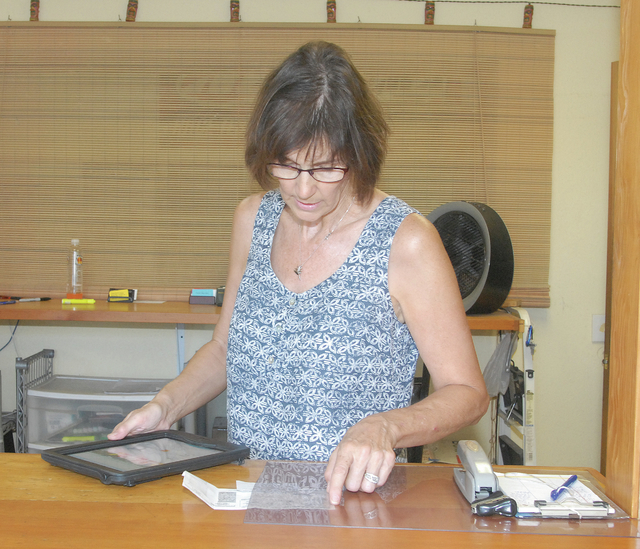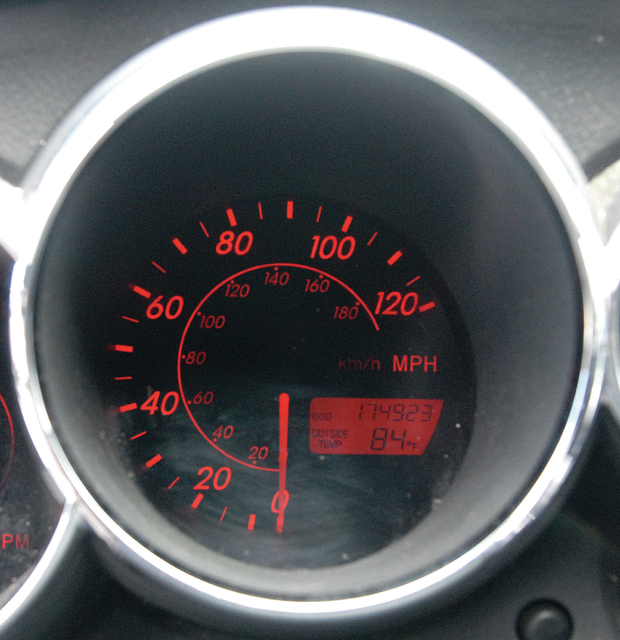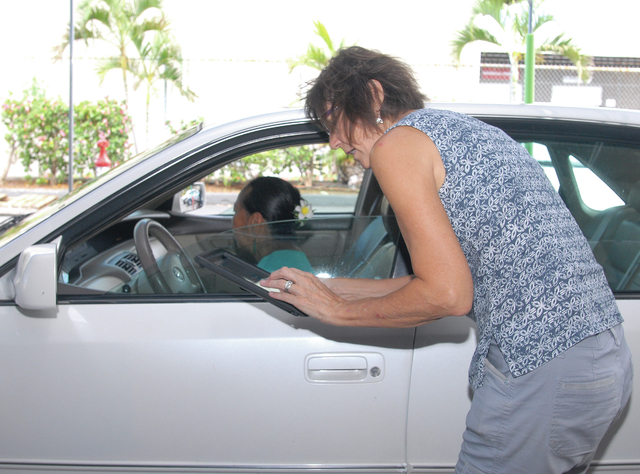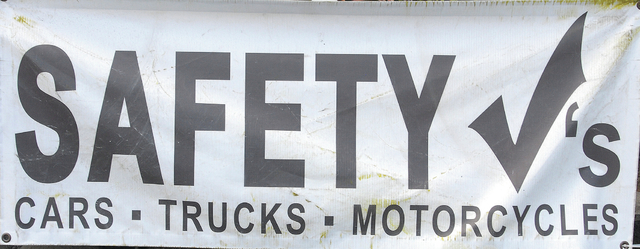Hawaii pilot program looks at charging people for miles driven as opposed to taxing gas
KAILUA-KONA — The state may do away with gas taxes and replace them with a road use charge, depending on the results of a proposed statewide trial program.
The Hawaii Department of Transportation is looking at the change, which would charge motorists for the number of miles they drive as opposed to the amount of gas they buy at the pump. The proposal would overhaul the way the state collects taxes to fund road repairs. As it stands now, the state’s fuel tax comprises roughly 33 percent of the state highway fund.
It’s being considered as a replacement for declining gas tax revenues, and could operate by billing vehicle users based on the odometer readings gathered when a driver sends his or her vehicle in for a safety check.
HDOT also cast the program as an attempt to make payments more even across the state.
“Although HDOT does not propose to collect actual revenue during this demonstration, participant feedback and input from partner project agencies will inform how a model payment structure could be defined to enhance compliance,” the state wrote about its test program.
The state application said a survey of the vehicle MPG by ZIP code showed “that residents of rural areas (like the Big Island) tend to pay more in gas taxes today than they would under a revenue-neutral RUC.”
The proposed system would serve to even out the payments between the rural and urbanized sections of the state.
It would also aim to “ensure that visitors contribute their fair share to the road system under a RUC, how that compares to gas taxes, and how to operationalize large rental car fleet relationships to accurately and efficiently assess a RUC,” the state wrote.
How paying for miles driven compared to gallons pumped plays out with visitors and commuters is yet to be seen.
Jim Mezzasalma, who performs safety checks at Kona Coast Customs, said he’s unsure how the whole thing would be implemented, and what that might mean for Kona Coast Customs.
“I understand the need. I just don’t see how they’re going to do it,” he said.
Without knowing how the DOT plans to implement the program, it’s hard to say whether this is a good idea, said Tom Yamachika, president of the Tax Foundation of Hawaii, a private nonprofit, nonpartisan, educational organization that monitors the state’s taxes and policies.
“Obviously we need to maintain the roads and bridges and stuff like that,” he said.
But how the money will be gathered is another question.
“The devil’s always in the details,” he said.
One advantage of gas taxes is they are effectively invisible, Yamachika said. It may be easier to pay a tax on each gallon pumped for users, rather than as a lump sump at the end of the year or the quarter when car owners are getting their safety checks.
“I don’t know about you, but when I get my vehicle reg, it’s a bit of a sticker shock,” Yamachika said.
That’s one of the things Oregon has dealt with, as it began its “test drive” of a road use program on July 1. There, each driver has accounts that accumulate the mileage cost, which is then paid. That’s done by a device plugged into the vehicle that monitors the miles driven and fuel used. Some options include a GPS unit, which enables the equipment to tax only the miles driven within the state.
Hawaii is considering using the mileage data collected in safety checks, like those performed by Jim and Kathy Messasalma at Kona Coast Customs.
A concern for Kathy Messasalma is how much education they’ll have to do on the tax system. They already do a fair amount of education with the safety check, she said, which can slow down how many vehicles they can check.
Additionally, the odometer readings are currently entered manually, which could have problems for tax collection, said Jim Messasalma.
They may be required to take photos of the odometer instead, he said, but that is another step in an already extensive list of actions.
The Hawaii Legislature this year rejected a proposed hike in the gasoline tax that was expected to increase costs for a typical motorist by about $83 a year. Also rejected were increases in vehicle registration fees and the vehicle weight tax.
Oregon also considered a flat fee, additional taxes on batteries or tires, and continuing to raise the gas tax before choosing the milage-based program.
Of the five options, the RUC was the best due to its inherent fairness, said Michelle Godfrey, public information officer with the Oregon department.
The charge is “agnostic to the type of vehicle you drive,” she said, adding that “It’s a direct proxy of actual consumption.”
Therefore people with low or high-MPG vehicles are paying the same amount for the amount they drive, she said.
Those payments are currently taken out at the pump, with the federal government charging 18.4 cents a gallon.
The right-leaning Tax Foundation places Hawaii’s additional taxes and fees at 42.35 cents a gallon, which is the fourth-highest nationally. Pennsylvania stands the highest at 50.4 cents, and Alaska at the lowest with 12.25 cents.
The foundation also said that Hawaiian drivers pay 74.4 percent of the cost of maintaining the roads through state and local fees, taxes and tolls. That is the highest percentage nationwide, followed by North Carolina at 63.3 percent.
The trial program is projected to cost $19 million — although $11 million is the “in-kind” cost from odometer readings. An additional $1.5 million is from the state for policy design and test set up. The federal government is asked to pay $6.5 million, mostly for reporting and evaluation of the manual and automated reporting evaluation.
“We’re thrilled you guys are thinking about it and joining the pacific state in leading the nation,” said Godfrey.


